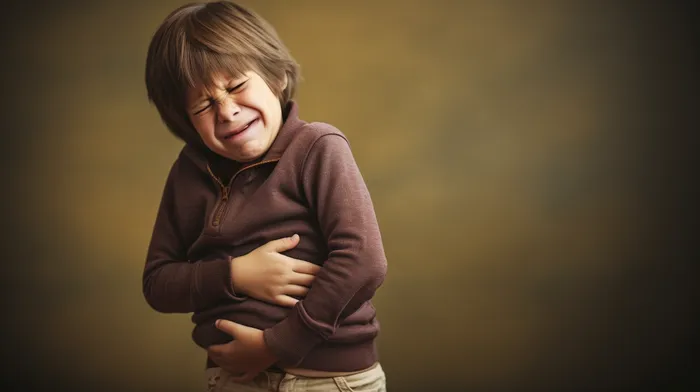Chronic pain, an unfortunate reality for many adults, is now becoming increasingly common in children, leading to growing concerns on how to address this alarming trend. Persistent and recurrent chronic pain in children can have long-term consequences on their physical and mental well-being. This article aims to shed light on the extent of the problem and possible ways to help children cope with chronic pain.
#The Growing Pain Epidemic
Canadian research led by Sara King, Ph.D. at Mount Saint Vincent University, has found that children today are experiencing pain at alarming rates. The study reported that girls are generally more affected than boys, and the prevalence increases with age. Researchers found that the pain was strongly influenced by factors such as anxiety, depression, low self-esteem, and poverty.
Stomach pain, back pain, musculoskeletal pain, and pain combinations are frequently occurring in children and adolescents, with rates ranging from 11% to 38%. These rates are worrisome, particularly when considering that the prevalence rates of childhood pain have increased over the last few decades.
#Why Chronic Pain is Increasing in Children
The reasons behind the growing pain epidemic in children are not yet fully understood. However, researchers suggest a combination of factors are playing a part.
- Sedentary Lifestyle – Inactivity and prolonged use of screens (such as smartphones, tablets, and computer screens) cause muscle imbalances and poor posture, which can contribute to chronic pain. Encouraging regular breaks and the adoption of ergonomic workstations can help mitigate these issues.
-
Poor Diets – High consumption of processed foods, sugar, and unhealthy fats can cause inflammation, leading to chronic pain. Ensuring children have access to a balanced diet consisting of whole foods, fresh fruits and vegetables, and quality protein sources can help prevent and manage chronic pain from inflammation.
-
Increased Stress Levels – Stress is known to cause muscle tension and exacerbate pain. In today’s fast-paced environment, children are exposed to increased stressors like schoolwork, extracurricular activities, societal pressures, and family dynamics. Teaching children ways to cope with stress through mindfulness, meditation, yoga, or physical activity is essential.
-
Unaddressed Mental Health Issues – As mentioned earlier, anxiety and depression contribute significantly to the experience of pain. Prioritizing mental well-being and providing treatment interventions can help alleviate some pain symptoms in children.
#Helping Children Cope with Chronic Pain
It is critical to consider a multidisciplinary approach when treating chronic pain in children, as addressing only the physical aspect of pain can be insufficient. Ensuring that mental health and emotional support is provided is essential for pain management.
- Physical Therapy – Physical therapy can help identify the painful areas and address musculoskeletal imbalances or weaknesses that contribute to chronic pain. Therapists can work with children to strengthen muscles, improve posture, and increase flexibility through targeted exercises.
-
Psychological Support – Counseling or therapy can help children identify and address any emotional or mental factors contributing to their pain. Cognitive-behavioral therapy, in particular, is an effective treatment to help children modify negative thought patterns around their pain.
-
Pain Medication – Over-the-counter and prescription pain medications can be used to manage chronic pain symptoms when necessary. However, it is essential to consult with a pediatrician before starting any medication regime.
-
Complementary and Alternative Therapies – Acupuncture, massage, and chiropractic care are alternative methods that may help relieve pain. Additionally, activities like yoga, tai chi, and mindfulness meditation can assist in pain management by promoting relaxation and stress reduction.
#The Importance of Early Intervention
Early intervention is key in addressing the rising epidemic of chronic pain in children. Parents and caregivers need to be aware of the signs of chronic pain and take appropriate actions to address it as soon as possible. Providing a supportive and understanding environment for children to express their pain and concerns is vital in helping them cope and recover.
The growing pain epidemic in children is a problem that cannot be ignored, and it is our responsibility as a society to come together and find effective solutions to combat this issue. Increasing awareness around chronic pain in children, encouraging healthy lifestyle habits, and providing resources and support for those affected are crucial steps in addressing this growing concern.
Remember, early intervention can prevent complications and long-term consequences associated with chronic pain in children. Help build a brighter, pain-free future for our younger generations.



